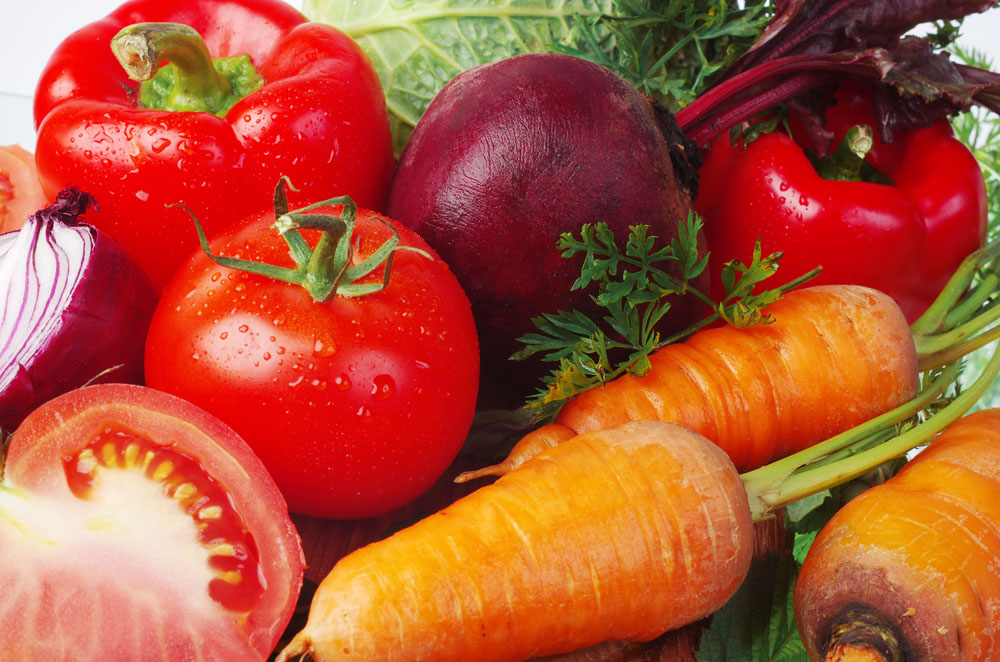
For the US and other mid-latitude countries north of the equator, the sun’s rays in the summer months hit the Earth at a steeper angle than in the winter. Because the sun’s rays at this time are not as spread out, they hit the earth more directly. Therefore the environment absorbs more of the sun’s energy. As we are exposed to increased heat from the sun, the quality of Pitta, or heat, in our own physiology increases.
The sun gives off three kinds of ultraviolet waves throughout the year: UVA, UVB, and UVC. Only the UVA and UVB rays actually hit the earth. UVA rays are fairly consistent in intensity all year round. The amount of UVB rays that hit the earth, however, increase from April to October, especially between 10 AM and 4 PM. During this time we are essentially getting a double dose of light rays. If we expose our skin during this time it can contribute to conditions such as premature skin aging, eye damage, and skin cancers. UVB rays can also suppress the immune system, reducing our ability to fight off other maladies.
Luckily, the perfect organizing power of nature provides summer fruits and vegetables that actually have the capacity to protect our skin from damaging effects of UV rays.
Foods with Vitamin C
A medium-size red bell pepper provides more than 200 percent of the daily recommended amounts of vitamin C. Researchers have suggested that vitamin C can promote the repair of DNA that has been damaged by UV rays.
It also triggers the production of white blood cells. White blood cells are the cells of the immune system that help fight off germs and bacteria. One study found that people with diets high in vitamin C were less prone to wrinkles.
Red and Orange Vegetables and Fruits
Red fruits and vegetables are rich in lycopene. a natural pigment and carotenoid, or antioxidant, responsible for the red color. Lycopene can combat free radicals (ions or molecules that can damage healthy cells and suppress our immune system.) In addition, it turns out that consuming lycopene can protect skin from sunburn. One study showed that the intake of 2.5 tablespoons of tomato paste daily can reduce the UV rays damage up to 50%.
Beta-carotene — another type of carotenoid found in red and orange produce (like carrots) — has been linked to reduced reactions to sunburns.
Orange and pink citrus fruits contain flavonoid, which has also been shown to improve the skin’s ability to protect against UV rays.
Spinach
Spinach contains lutein, a carotenoid that protects your skin from UV damage.
Other Health Creating Fruits and Vegetables
While not directly linked to protecting us from the increase in UV rays, many fruits and vegetables pack a lot of other health benefits. Since overexposure to UVB rays can suppress the immune system, it makes sense to enjoy foods that can help give our system an extra boost. Here are just a few:
Blackberries are high in rutin, a type of antioxidant that has been found to block an enzyme linked to the formation of blood clots, thus lowering the risk of strokes and heart attacks.
Brussels sprouts contain sulfur compounds that have been shown to reduce inflammation and activate cartilage-protecting proteins. These qualities suggest the vegetable may be helpful in treating rheumatoid arthritis.
Basil contains the antioxidant eugenol, which has been found to have cancer-fighting properties.
Kale contains 12 times the recommended daily amount of vitamin K. Vitamin K has been linked to decreased heart disease and osteoporosis.
Ayurveda Tips for Summer
Staying out of the mid-day sun, eating meals on time, choosing Pitta-reducing foods, avoiding strenuous activity, keeping well hydrated with room temperature water and other drinks, and eating lots of fresh produce are all simple steps you can take to help keep your Pitta pacified during the hot summer months.
Signs of an aggravated Pitta include excess stomach acid, gastritis, heartburn, skin eruptions, insomnia, and irritability. If you are experiencing any of these symptoms, a visit with an Ayurveda expert can help to identify foods or habits that are aggravating Pitta and give recommendations to avoid more serious imbalances.
